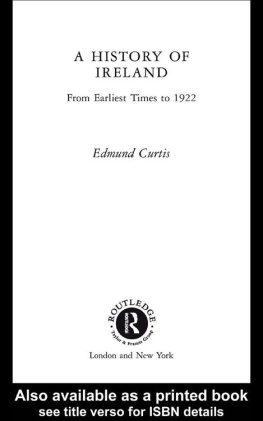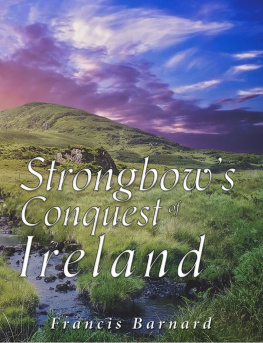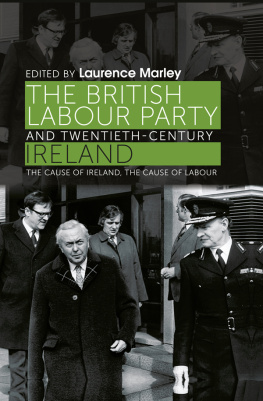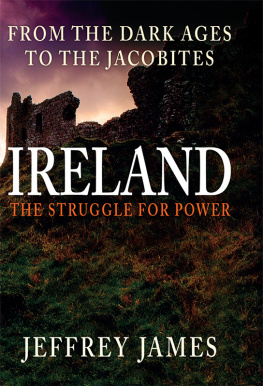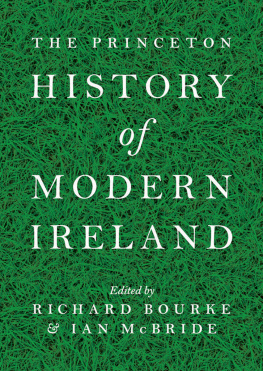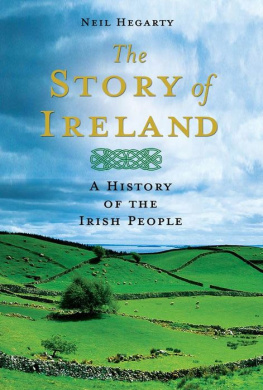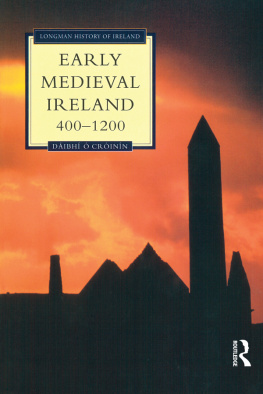
A HISTORY OF IRELAND
Edmund Curtiss remarkable survey of Ireland, from its earliest origins to the twentieth century, is a classic introduction to Irelands fascinating history. Reaching from St Patricks Mission in 432 to the Anglo-Irish Treaty of 1922, this authoritative text explores the formative events of Irelands past and encompasses the Norman invasion, Gaelic recovery, Cromwells Settlement, the Act of Union, and the Great Famine.
Lucid and scholarly, this all-embracing account unfolds the events of Irelands history and the story of its people, through an examination of their political, religious, social, economic and cultural past.
Irelands unique history is revealed here through the moving forces, the deciding facts, and the men who mattered.
Featuring a chronology of key dates in Irish history and a guideline to the pronunciation of Irish names, this celebrated narrative now includes a new introduction by Sen Duffy.
H
A HISTORY OF
IRELAND
From Earliest Times to 1922
Edmund Curtis
London and New York
First published 1936 by Methuen & Co. Ltd Sixth edition first published 1950
Reprinted seven times
First published as a University paperback 1961
Reprinted eleven times
Reprinted 1988, 1990, 1992, 1995, 1996, 1998, 2000
by Routledge
11 New Fetter Lane, London EC4P 4EE
Simultaneously published in the USA and Canada by Routledge
29 West 35th Street, New York, NY 10001
This edition first published 2002
Routledge is an imprint of the Taylor & Francis Group This edition published in the Taylor & Francis e-Library, 2005.
To purchase your own copy of this or any of Taylor & Francis or Routledges collection of thousands of eBooks please go to www.eBookstore.tandf.co.uk.
1936, 1950, 2002 Edmund Curtis
All rights reserved. No part of this book may be reprinted or reproduced or utilized in any form or by any electronic, mechanical, or other means, now known or hereafter invented, including photocopying and recording, or in any information storage or retrieval system, without permission in writing from the publishers.
British Library Cataloguing in Publication Data A catalogue record for this book is available from the British Library Library of Congress Cataloging in Publication Data A catalog record for this book has been requested ISBN 0-203-98730-6 Master e-book ISBN
ISBN 0-415-27949-6 (Print Edition)
CONTENTS
Maps
vii
Introduction
ix
Preface
xiii
1 From the origins to a.d. 800
2 The Norse tyranny, 8001014
3 The end of Gaelic independence, 10141166
4 The Norman invasion, 11661172
5 The organization of the Conquest, 11721216
6 The expansion of the colony, 12161272
7 English Lordship at its height, 12721327
8 The decline of the colony and the Statutes of Kilkenny, 13271366
9 Last efforts of the English Lordship, 13661399
10 The Gaelic recovery and aristocratic Home Rule, 13991477
11 The Kildare supremacy and the Reformation, 14771540
v
A H I S T O R Y O F I R E L A N D
12 The Tudor monarchy and the second conquest of Ireland, 15401603
13 The early Stuart monarchy and Cromwellian period, 16031660
14 The later Stuart monarchy, 16601691
15 The monarchy of William and Anne, 16911714
16 Hanoverian rule, 17141782
17 The rise and fall of the Protestant nation, 17821800
18 From the Union to 1848
19 From the Famine to Parnell, 18481891
20 From Parnell to the Treaty of 1922
Recommended for further reading
Pronunciation of Irish names
Key dates of Irish history
Index
vi
MAPS
Ireland in 1014
2829
Ireland in 1216, after 40 years of Norman invasion 6263
Ireland in 1330, Anglo-Norman lordship at its height 90
Ireland divided into great lordships, circa 1500
vii
H
INTRODUCTION
by Sen Duffy
Without having subjected the matter to extensive bibliographical analysis, I would venture the observation that few countries irrespective of size, population and importance (however one cares to measure it) have had more single-volume surveys of their history written than has Ireland. At any one time there are literally dozens of them in print and they sell like the proverbial hot cake, frequently in inverse proportion to their merit (the compulsion to write a history of Ireland being irresistibly attractive to those least qualified for the task). Demand by the readership of such works is outstripped only by publishers clamour for new additions to the collection, but, although the shelves of libraries and bookshops are groaning under the weight of general narratives, those who practise the trade of Irish history find it very hard to recommend any one work that will cover all.
Even works by professional historians which claim to survey the story of Ireland from earliest times to the present often do a grave injustice to their subject. Apart from the fact that sorties into medieval Ireland by modern historians have not infrequently proved disastrous (if unintentionally hilarious), more importantly, the latter understandably believes that the history of modern Ireland is what really matters. Hence, although the dawn of Irish history comes with the introduction of the written word 1,600 years ago, it is not unusual for a general history of Ireland to cover the first fourteen centuries of its history in as many pages, while giving over the equivalent of a page, or even two, to each of the last 200 years.
A general history of Ireland that does justice to medieval and modern alike, I would suggest, is therefore more likely to come from the pen of a medievalist. And few among the latter can compare with the late Edmund Curtis. Curtis led an extraordinary life. Born at Bury in Lancashire in 1881, his parents were of Irish Protestant extraction, his father a Donegal man, his mother from ix
A H I S T O R Y O F I R E L A N D
Belfast. By the time he had reached his early teens the family were living in the slums of Londons east end and he himself was working for ten or more hours a day in a rubber factory earning eight shillings a week. Yet, at the age of fourteen he had a short story and some verses published in a London newspaper and four more of his poems appeared in the weekly paper London in June 1896. When it was revealed that the author was a fifteen year-old factory-worker, benefactors put forward money for his schooling and he ended up in 1900 winning a history scholarship to Keble College, Oxford. Gradu-ating in 1904 with first-class honours, he secured a lectureship at the University of Sheffield, and published his first book, on the Normans in Sicily, in 1912. But long before then he had developed an interest in Irish history, and had published on the subject as early as 1905. When, therefore, the Erasmus Smiths chair of modern history at Trinity College Dublin became vacant, he applied, was appointed to it in 1914 and occupied it for the next twenty-five years, before securing the Lecky chair of history in the same university four years before his death, on his sixty-second birthday, on 25 March 1943.
What is most remarkable about Edmund Curtis the historian is his range of skills. A product of the Stubbsian school of medieval historiography at Oxford, where primacy was given to the study of governmental, administrative, and legal records, he had a heart steeped in the appreciation of literature and language: this meant that when he came to the study of Irish history, he was perfectly suited to the task of exploiting the records and source-materials of both the Anglo-Irish and Gaelic worlds. His family background in Donegal led him to the Irish-speaking communities in Gweedore where he learned the language at first hand and became immersed in Irish folklore and traditions. It is true that this gives his writings a rather romantic hue, but more importantly it meant that when he wrote of the Irish he wrote as one of their own. Not only had he, by learning Irish, become one of the first professional historians to have the technical skills to use the historical sources of the native Irish, but he could write on the subject with a degree of insight, understanding, empathy, interest, even affection, that few before or since have exhibited. Edmund Curtis loved Ireland and the Irish people and has been criticized for the quaintness that this lent his work, but he wrote at a time when the prevailing orthodoxy within professional Irish historiography was apathetic if not antipathetic towards the very people whose story was being told; what Curtis brought was warmth and fairness and balance. His own background, both that of his ancestors and his earlier life, meant that he could x
Next page
